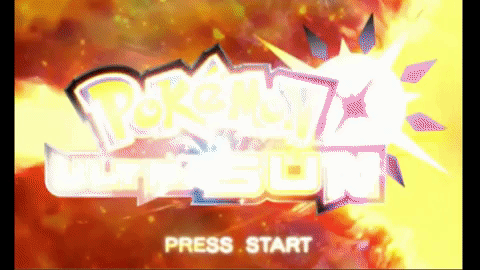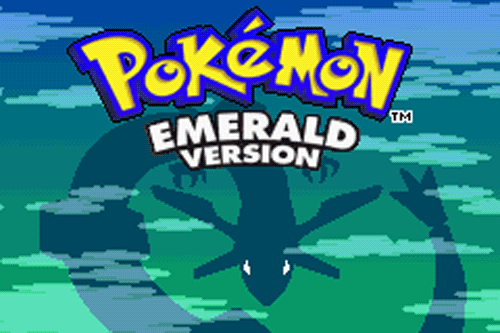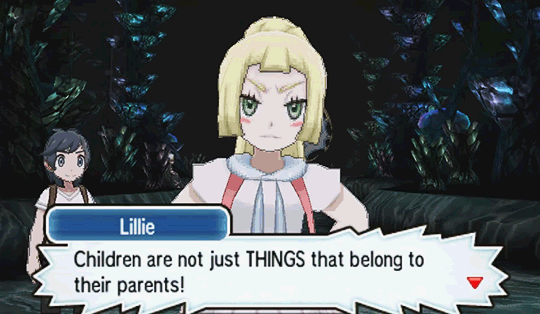I still remember just how captivated I felt while playing Pokémon Sun last year. I poured myself into the game as much as possible from beginning to end, savoring some convenient time off and putting together a full review that I still feel pretty proud of. Just a year later and I’m doing the same thing with Ultra Sun, but I feel much more conflicted this time. Objectively, I don’t see anything wrong with the game that wasn’t there before, yet I’m nowhere near as invested or impressed. Maybe it’s because I also ended up playing through Moon between now and then, but I found it difficult to start yet another Alolan adventure. Things did pick up eventually, but it’s still notable that I was pushing myself to play through the game instead of pulling myself away from my 3DS.

In all fairness, I’ve never been as big into the extra versions that come along in Pokémon generations. It’s nearly impossible for them to supersede the originals when it comes to timing, popular interest, marketing and all kinds of other factors of a game’s release. This is the first time that I didn’t — at the very least — enjoy the ride. I expect a great deal of that’s subjective, as my colleague Jaxson Tapp served as my lunar counterpart this time around and had a much better experience. This isn’t a call to accept my view over his or any other review out there. Rather, it’s spurred me to look at third versions in general, and Ultra Sun & Ultra Moon with respect to their earlier forms, to try and figure out why things feel the way they do.
Welcome to the World of Pokémon…again
Third versions have been a part of Pokémon even before they came to America, yet I feel it wasn’t until Rayquaza’s descent in Emerald to really make these double, sometimes triple, dips feel substantial. Part of this is due to additions like the Battle Frontier and the tweaked storyline, while also incorporating many features and advances that build upon not just Ruby & Sapphire, but the recently released Fire Red & Leaf Green. It was an update across the board that featured enough differences to stand on its own as an alternative experience and a gameplay refinement in nearly every corner of the adventure. Platinum would follow suit in this regard some years later, similarly succeeding even without building directly off of its generation’s “remakes.”

In this way, the third and fourth generations of games set the template of what’s generally expected in a given gen. Whether you enjoy the pattern or not, it became feasible to expect the new pair of games, an eventual third version and remakes of an earlier generation to keep its story and capturable Pokémon readily available on contemporary systems. This was short-lived though, with Gen V offering a pair of direct sequels (instead of a third version) and no remakes, and Gen VI having no third versions but also remaking the third generation in a big way.
That brings us back to Gen VII’s newest games, Ultra Sun & Ultra Moon. Their identity is most like Platinum, though when looking at just how much was brought to table with Black 2 & White 2 I feel like that’s a step backward. The second round in Unova grew directly off of its predecessors’ storylines and brought plenty more in the gameplay department, and while I can’t say that the Ultra games haven’t grown — and in some ways improved on — their earlier selves, it comes off as less like an expansion and more like a replacement. That’s generally been reserved for full remakes, coming multiple consoles and several years later; not after a single year, with my first jaunts through Alola fresh in my mind.
Still some shine in those skies
In its defense, there are some marked improvements that I appreciate more because I played the earlier adventures. Much has been said about how much more smooth the beginning of the game is, and how friendly it is for those resetting for their starter. Lillie, Guzma and other members of the core cast are also handled arguably better and more consistently this time, and as a fan of the Rotom Pokédex from the get-go, it was a real treat to see it taken to new heights and provide buffs and more variety in its commentary.

Where things start to gray for me are when it comes to the adventure itself. Tweaking the trials, and even adding new ones, didn’t do enough for me personally to make the trip worth it. This isn’t a facet unique to these versions, but it’s a shame to go from the breath of fresh air that they brought the first time around. I also wasn’t won over by Mantine Surfing or the Alola Photo Club. They’re welcome additions, but hardly act as game changers.
Looming along the horizon
The added importance of Necrozma to the plot does unify things, but the Prism Pokémon also hangs overhead at every turn of the plot — and with it comes a greater emphasis on Ultra Space. This is where things rubbed me the wrong way the most. Sun & Moon, to me, were fantastic examples of character growth in a fun, fantasy world. There were real risks and dangers, but ultimately it was still a game about kids being kids as we’ve come to know. The hard shift to a more sci-fi direction isn’t without precedence throughout the series, but as someone who wasn’t crazy about Ultra Beasts to begin with, they and their world taking prominence over the Alola region’s bright and energetic personality was a letdown.

Keep in mind, I can recognize that when it comes to being a game (and a Pokémon game, at that) Ultra Sun & Ultra Moon are probably better. Along with what I already touched on, they have some fantastic post-game content that caters to longtime fans, a grander variety of Pokémon to encounter, and plenty of added resources and convenience for competitively-minded battlers. It’s just a shame that rather than an alternate experience or coexisting partner, Ultra Sun & Ultra Moon come off as full-on replacements of Sun & Moon.
Nothing’s stopping me from preferring the first steps in Alola, but this sort of treatment of them so quickly has me concerned for Pokémon in the future. I’m all for what are fundamentally better games, but this has created an environment where Gen VII is only two years old, has four versions and two of them are just plain fuller titles. There’s also the continued possibility of a “Stars” version or another update on the Switch, which would just make things even more pronounced. I feel that may be overkill, and seeing what was bolstered specifically for the new pair (versus the kinds of updates we generally come to expect), I can only hope that, just like an eclipse, this is but a rare occurrence.
Leave a Comment

